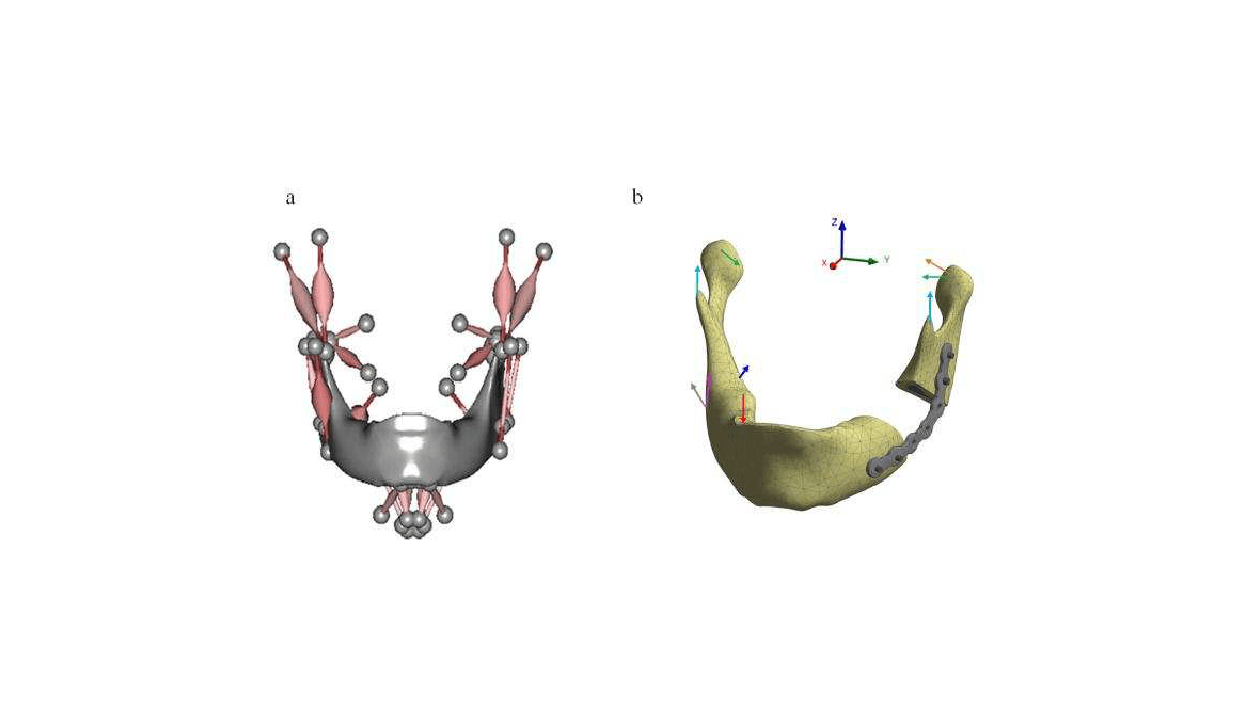Jaw reconstruction following a significant loss of mandible bone, especially in the case of a mandibular angle defect, requires strict specifications for the inserted reconstruction plates and their fixation to the remaining healthy bone tissue. Despite great care being taken when using conventional titanium plates, plate failure can repeatedly occur in the form of fractures or loosening of the fixing screws. The aim of this study is to develop a 3-dimensional finite element model (FEM) of a human mandible angle fracture for the development of a new osteosynthesis plate system made of polyether ether ketone (PEEK). The jaw geometry of the model was reconstructed from anonymous computed tomography patient data, with a representative mandibular angle defect subsequently introduced. Based on this jaw geometry, three reconstruction plate types were integrally modeled and tested for fatigue fracture and screw loosening: a standard design titanium plate, a standard design PEEK plate, and a newly designed PEEK plate. To determine the forces acting on the jaw in the worst-case scenario of clenching, individual muscle forces were separately calculated by a musculoskeletal model in the software Anybody and applied as a changing dynamic load on the jaw models. Dynamic loading of the standard design Ti-plate demonstrated a maximum fatigue limit of 3.10x 105 cycles and a stress of 25-50 MPa at the bone-screw interface. The alternative material presented here is the semicrystalline thermoplastic polymer PEEK, which is particularly promising as a long-term implant due to its excellent biocompatibility and a similar elastic modulus to bone. By forming the same standard design out of PEEK, stresses at the bone-screw interface were reduced to 6.6-23.5 MPa. Based on this result, an alternative design for a PEEK reconstruction plate was developed with stiffness-adapted geometry and optimized to reduce the likelihood of fatigue fractures and screw failure. Consequently, tension at the fixation points was further reduced. FEM results confirm the validity of PEEK as a reconstruction plate material and the use of alternate plate designs. Redesigned PEEK plates represent a viable alternative to the standard design titanium plates currently in use.
Evaluation of a New PEEK Mandibular Reconstruction Plate Design for Continuity Defect Therapy by Finite Element Analysis

26
آذر
